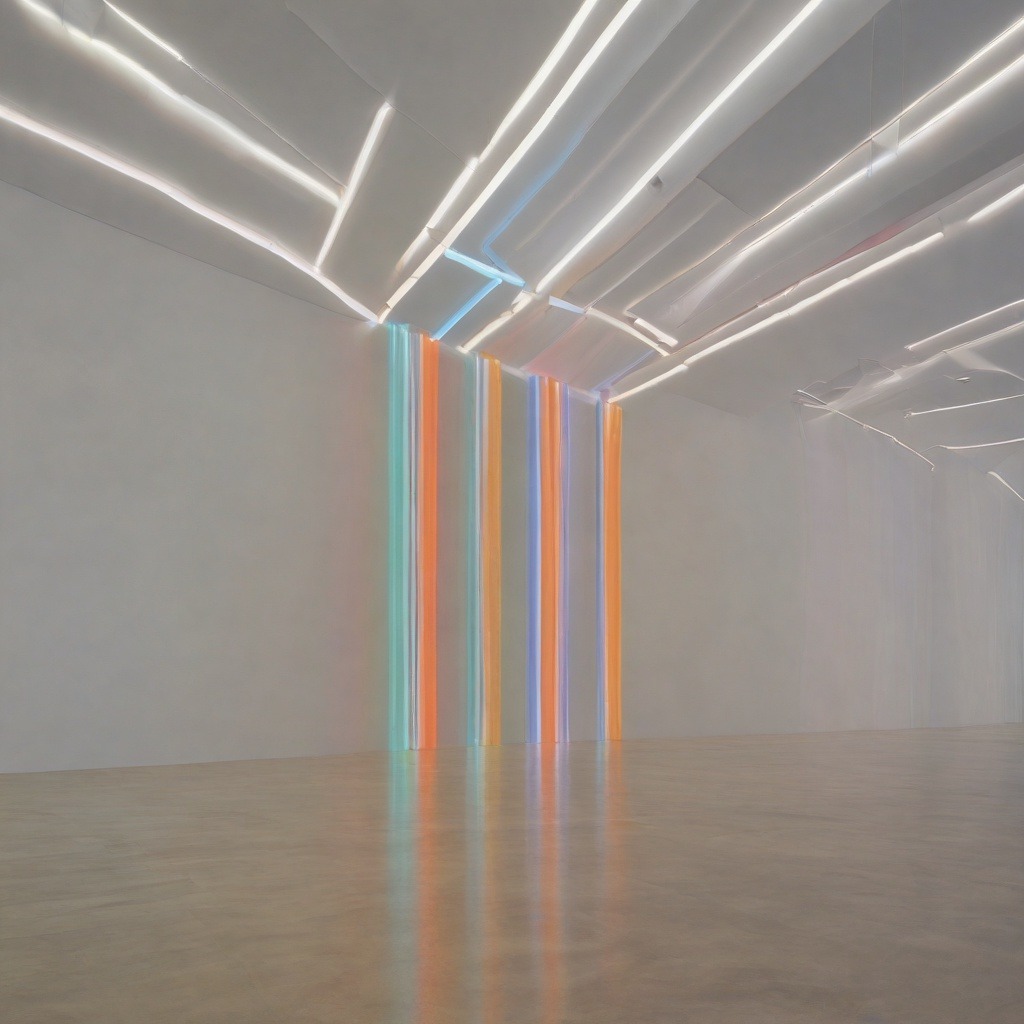The art style of minimalism is a movement that emerged in the 1950s and 1960s and was influenced in various artistic fields such as painting, sculpture, architecture, and music. Minimalism is characterized by simplicity, reduction to the essentials and an emphasis on form, color and space. This art form strives to eliminate all superfluous elements and create a clear, immediate presence that invites the viewer to a conscious experience.
The use of generative artificial intelligence (AI) in the context of minimalism offers exciting opportunities to explore the distinctive features and styles of this era and to create new works that reflect the aesthetic principles of minimalism. Generative AI algorithms can be trained to mimic the minimalist approaches and techniques and generate artworks that embody the simplicity, clarity, and visual power of minimalism.
An essential feature of minimalism is the emphasis on simplicity and reduction. Artists reduce their works to basic elements such as geometric shapes, clean lines, and simple color palettes. Generative AI algorithms can learn to capture this minimalist aesthetic and generate artwork that creates a clear and straightforward visual impact.
Another important feature of minimalism is the emphasis on space and emptiness. Minimalist artworks use the space around them as an integral part of the work, creating an interaction between positive and negative space. Generative AI algorithms can learn to use the space in their generated artworks and create works that have a subtle balance between presence and emptiness.
In addition, minimalism is often characterized by a monochrome color palette limited to a few, selected colors. This contributes to the simplicity and clarity of the works and emphasizes the formal quality of the art. Generative AI algorithms can learn to capture the color preferences of minimalism and generate artworks that create a calm and balanced atmosphere with their restrained coloring.
When generating the Minimalism art style using Artificial Intelligence (AI), there are a few important aspects to consider in order to successfully capture the characteristic features of this art movement:
- Reduction to the essentials: Minimalism is characterized by its reduction to the essentials. Generative AI algorithms should be trained to eliminate unnecessary details and generate artwork that contains only the basic elements for a clear and immediate visual impact.
- Simple shapes and clean lines: Minimalist artwork often uses simple geometric shapes and clean lines. Generating minimalism-style artworks, therefore, requires the AI’s ability to recognize these simple shapes and lines and use them in their generated works.
- Emphasis on space and emptiness: Space and emptiness are essential components of minimalism. Generative AI algorithms should learn to use the space around the depicted elements and create a balanced relationship between positive and negative space to capture the minimalist aesthetic.
- Monochrome color palette: Minimalism often uses a limited, monochrome color palette. Generative AI algorithms need to develop the ability to recognize minimalist color preferences and generate artworks limited to a few selected colors to emphasize the simplicity and clarity of the works.
- Clear and straightforward composition: Minimalist artwork often has a clear and straightforward composition. Generating minimalism-style artwork requires the ability of AI to create a simple yet impactful composition that enhances the visual impact of the work.
By taking these aspects into account, generative AI algorithms can create minimalist-style artworks that capture the characteristic simplicity, clarity, and visual power of this art movement.
Overall, the use of generative AI in the context of minimalism offers an exciting opportunity to explore the core principles of this art form and create new works that capture the simplicity, clarity, and visual power of minimalism. By combining human inspiration with machine intelligence, new works of art can be created that bring the heritage and cultural significance of minimalism into a modern and technologically advanced era.























